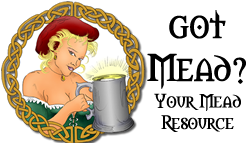Hey all, long time no post.
So, I finally decided to take a shot at my high ABV sweet mead again. I started it Jun 19, and at first everything went well. I started with a gravity of 1.140, (a little over target, but my measurements may have been slightly off for the water and honey) aerated 2x daily, and the gravity was dropping about 10 points per day. I reached my first feed break (calculated 1.093 for that starting gravity) and added another pound of honey, bringing the gravity back to 1.130. Based on some other information and feedback I received elsewhere, after the first feed break I stopped aerating, but continued to check the gravity daily. The first day or two went well, but then the yeast started slowing quite significantly. I wasn't seeing a lot of gas activity in the airlock, and the gravity was only dropping 2-4 points per day. Still, I reached the next feed break on the 30th, and added the next pound of honey, bringing the gravity up to 1.124. Then things REALLY started to slow down.
Last Saturday I decided to try getting it going again by drawing off some of the must to make a starter with an additional vial of White Labs' SHG yeast and nutrient. I let that sit for about 12 hours to get going, then pitched it back into my must and gave it a good five minutes with the air stone. Bingo, that got the gas going. Since then, I've continued checking the gravity, but rather than using the stone I've been given the carboy a good vigorous shaking once per day to keep the yeast suspended. There's a lot of gas activity...but over the last three days there's been no change to the gravity.
Clearly the yeast are doing SOMETHING because there's a lot of activity in the airlock. Is that second batch of yeast just in an aerobic/growth phase and I should begin seeing fermentation resume soon? Or is there something else going on?





